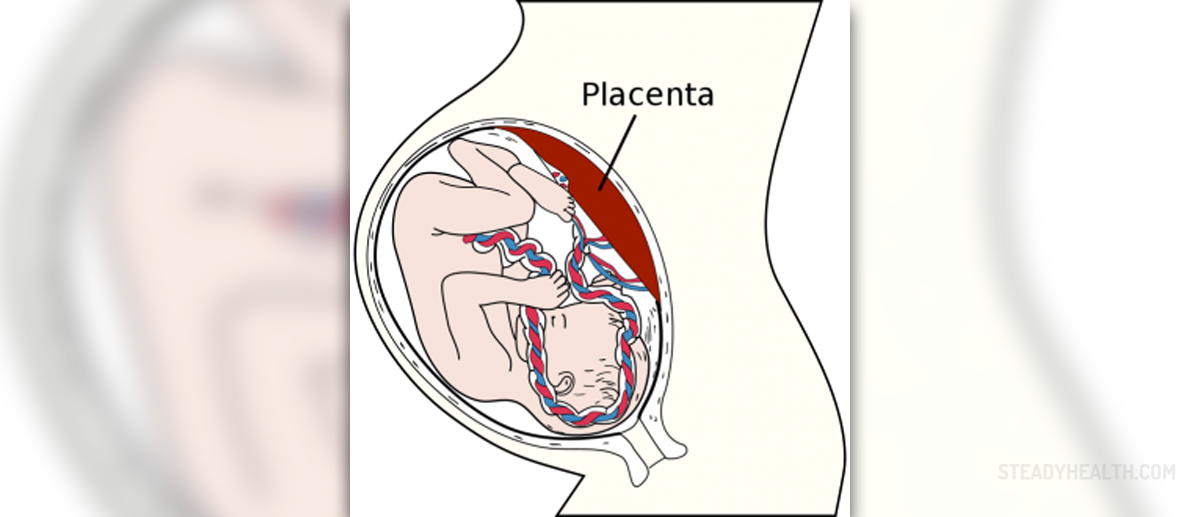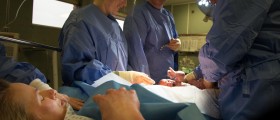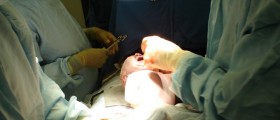
Placental abruption can be diagnosed through ultrasound. The most common symptom of placental abruption is bleeding from the vagina, but even when bleeding is not noticed an abruption can be going on because the blood resulting from the abruption might not have a way out, and can pool in the uterus instead. A painful, and very firm uterus, are also symptoms of placental abruption. Fetal distress will be occurring at the same time if the baby is not getting any oxygen. A partial placental abruption can be less of a risk, depending on the degree of abruption and the reasons the placenta started separating. If an abruption was diagnosed as having happened in a limited area, the mother and baby might remain on bed rest, being monitored, but without active management. This especially applies if the partial abruption happened earlier on in pregnancy, long before term.
A complete abruption is a serious medical emergency that requires an immediate c-section. In cases where a partial abruption started and the baby is already at term, an induction may be offered. There is no treatment for placental abruption, other than the delivery of the baby. Placental abruption can happen to anyone, but it is often a sign of other complications such as a uterine infection, uterine abnormalities, or a previous cesarean section. Also see when after birth is the placenta delivered? and what does the placenta do?














Your thoughts on this
Loading...